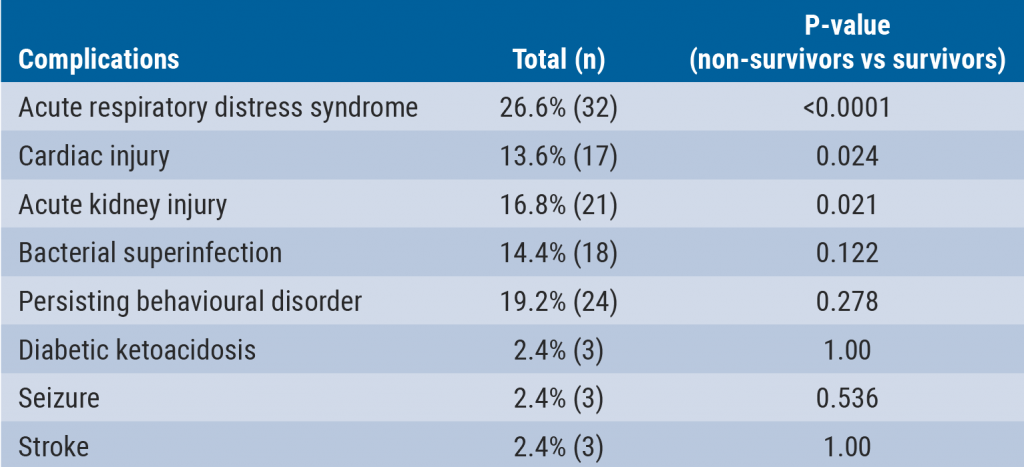Dr Schankin explained that circadian rhythm is present at single-cell level, and that organs function together as a single circadian unit (the peripheral clock). They run independently and are synchronised by a central ‘pacemaker’, the suprachiasmatic nucleus (SCN). The SCN is calibrated by ‘Zeitgeber’: light, food, temperature, exercise, and circadian hormones (most notably steroids, melatonin). Steroids and melatonin not only change the SCN, but are also changed by it.
There is clinical evidence of circadian rhythmicity in migraine and other primary headache disorders: most attacks start between noon and 1 PM. Furthermore, ‘early risers’ in general have migraine attacks that start early in the day. Cluster headache mostly seems to start very early in the morning: at 1 or 2 AM. There is also a possible circaceptan (weekly) rhythmicity in migraine, with more attacks on Fridays and fewer on Sundays. Women often have migraine attacks at the beginning of the menstrual period. Migraine attacks seem to originate in the subcortical areas, and/or from the hypothalamus, as was confirmed in imaging studies. There is a clear circannual rhythmicity in cluster headache, which can be provoked by very long and short days (in June and December, respectively). Other patients have relatively very few attacks in summer.
It is unclear which factors drive rhythmicity in migraine and other primary headache disorders. There is evidence for involvement of the hypothalamus and its major mediators (CLOCK, CK1, PACAP, melatonin, orexins). The association with sleep is bidirectional: sleep is affected by headache, and headache by sleep.
Dr Schankin said medication altering rhythmicity may be helpful as migraine treatment. Among the interventions that have been studied thus far are melatonin and corticosteroids (to reset the body clock), orexin A and B (involved in sleep, arousal, feeding), lithium and valproic acid, and PACAP. Solid evidence for any of these options is still lacking.
- Schankin C. Rhythmicity in Headache Disorders. SYMP10-2, EAN 2021 Virtual Congress, 19–22 June.
Copyright ©2021 Medicom Medical Publishers
Posted on
Previous Article
« Typing behaviour to remotely monitor clinical MS status Next Article
Occipital nerve stimulation in drug-resistant cluster headache »
« Typing behaviour to remotely monitor clinical MS status Next Article
Occipital nerve stimulation in drug-resistant cluster headache »
Table of Contents: EAN 2021
Featured articles
Letter from the Editor
COVID-19
First evidence of brainstem involvement in COVID-19
Cognitive/behavioural alterations persistent after COVID-19
Neural base of persistent hyposmia after COVID-19
Neurological symptoms and complications of COVID-19 affect outcomes
Cerebrovascular Disease
Intracerebral haemorrhage only slightly increases mortality in COVID-19 patients
Stroke with covert brain infarction indicates high vascular risk
Expanding precision medicine to stroke care
Dexamethasone not indicated for chronic subdural haematoma
Cognitive Impairment and Dementia
Severe outcomes of COVID-19 in patients with dementia
Promising diagnostic accuracy of plasma GFAP
Sex modulates effect of cognitive reserve on subjective cognitive decline
Hypersensitivity to uncertainty in subjective cognitive decline
Epilepsy
Minimally invasive device to detect focal seizure activity
‘Mozart effect’ in epilepsy: why Mozart tops Haydn
Migraine and Headache
Factors associated with decreased migraine attack risk
Pregnant migraine patients at higher risk of complications
Occipital nerve stimulation in drug-resistant cluster headache
Rhythmicity in primary headache disorders
Multiple Sclerosis and NMOSD
Typing behaviour to remotely monitor clinical MS status
Alemtuzumab in treatment-naïve patients with aggressive MS
No higher early MS relapse frequency after stopping ponesimod
Good long-term safety and efficacy of inebilizumab in NMOSD
Neuromuscular Disorders
Inability to recognise disgust as first cognitive symptom of ALS
Pathogenic T-cell signature identified in myasthenia gravis
Parkinson’s Disease
Levodopa-carbidopa intestinal gel in patients with advanced PD
New Frontier – Navigated Transcranial Ultrasound
Exploring the possibilities
Related Articles
August 18, 2021
24-month pooled FIREFISH data of risdiplam in SMA

August 18, 2021
Severe outcomes of COVID-19 in patients with dementia
August 18, 2021
Stroke with covert brain infarction indicates high vascular risk
© 2024 Medicom Medical Publishers. All rights reserved. Terms and Conditions | Privacy Policy

